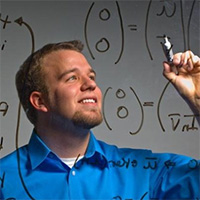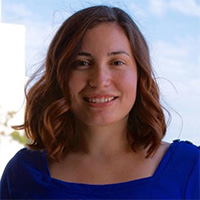National Science Foundation Fellows
This semester, SDSU welcomes two National Science Foundation Graduate Research Fellows to campus.

The National Science Foundation launched the its Graduate Research Fellowship Program (GRFP) to help ensure the vitality and diversity of the scientific and engineering workforce of the United States. The program recognizes and supports outstanding graduate students who are pursuing research-based master's and doctoral degrees in science, technology, engineering, and mathematics (STEM) and in STEM education.
The GRFP provides three years of support for the graduate education of individuals who have demonstrated their potential for significant research achievements in STEM and STEM education. NSF especially encourages women, members of underrepresented minority groups, persons with disabilities, and veterans to apply.
This semester, San Diego State University welcomes two National Science Foundation Graduate Research Fellows to campus.

Matthew Voigt
Hometown: St. Paul, Minnesota
Ph.D. in Math and Science Education
I chose SDSU because it's a leader in the field of math and science education. I was blown away with the faculty’s hospitality and dedication to student learning.
My greatest educational accomplishment was having my research recognized by the National Science Foundation with a Graduate Research Fellowship. I am also proud of my undergraduate advocacy work for Lesbian. Gay, Bisexual and Transgender assistance and resource, which resulted in additional funding for LGBT safe space programs.
I hope to become a leader in the field of math education, through research and teaching. I would like to combine my experience as a computer programmer and educator to create dynamic new ways of exploring mathematics for both children and adult learners.

Priscilla Kelly
Hometown: San Diego, California
Ph.D. in Computational Science
I chose to attend SDSU for graduate school because of the research opportunities faculty in the physics department offered me.
The field I am working in is called nanophotonics. We are trying to develop materials that can control light on the sub-wavelength scale. These materials could be then used to fabricate ultrafast nano-LEDs which could bridge the gap between the small sizes of electronics and the faster speeds of photonics.
My goal is to rigorously develop and characterize new materials that will make a difference in other people’s lives.



